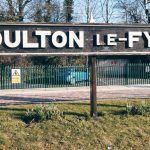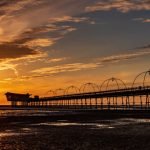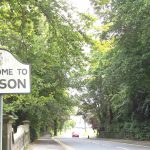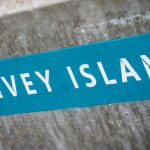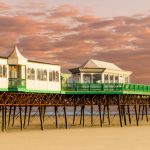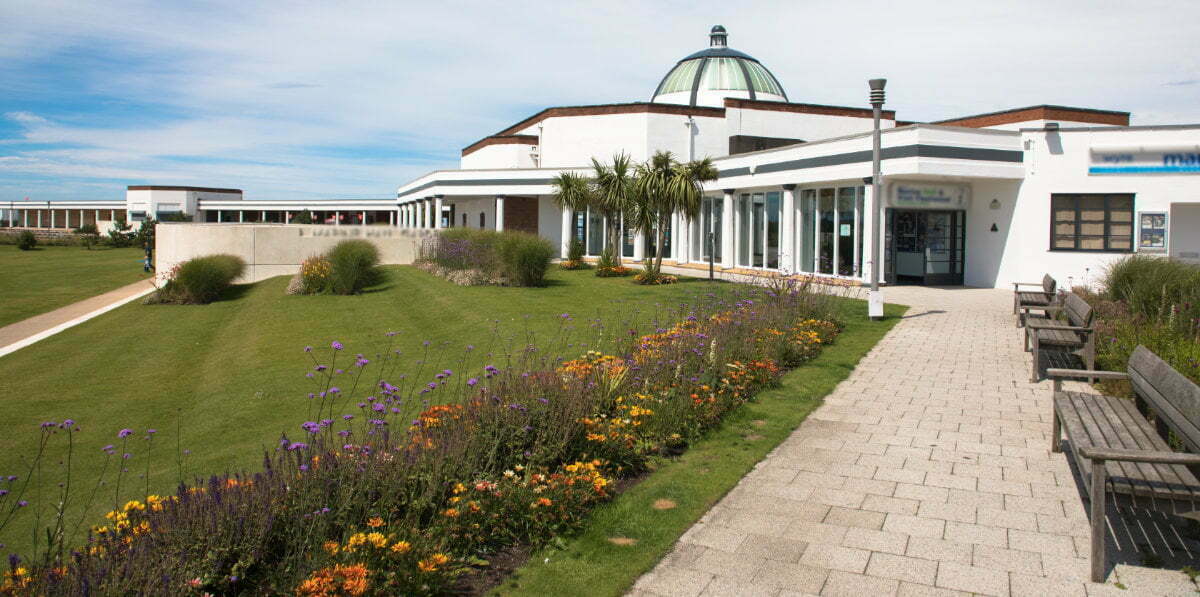
Fleetwood is a bustling town on the corner of The Fylde, on the east coast of England and somewhere in Lancashire. Although it officially became a bustling town in the Industrial Era, there’s a fair amount of history that went into the making of the place before then.
Today we will try to give you the Five Minutes Spare tour treatment so you can get to know Fleetwood. Could this often overlooked seaside town be the port destination you have been looking for all your life? We’ll find out shortly.
The Early Days of Fleetwood, Lancashire
Fleetwood was formerly known by another name and took its title from Edmund Fleetwood, the first lord to reside at Rossall Hall. It was originally in the Hundreds of Amounderness. However, Iron Age artefacts found in the area show the presence of Roundhouses at Fleetwood Road. The Bourne Hall Farmstead there was thought to have been in place from the Middle Ages, and historians believe it to have been the site of a fort of some kind since the hill offers great views out over the Wyre Estuary[i].
It is theorised that the site of Fleetwood was occupied during Roman times and that it may even have been an important port. The presence of a sharp turn off towards the area in the Roman Road would suggest it was inhabited. The Romans would have called it “The Port of the Selantii”, with the Selantii being the tribe that occupied many areas of southern Lancashire before the Romans came.
The next mention we could find of Fleetwood was in 1066 when the Battle of Hastings took place, and the town was awarded to William the Conqueror’s buddy for his part in the war effort. It was given to Baron Roger de Poictou[ii], which was recorded in the Domesday Survey of 1086. The same man was given 283 named places in the book. The region was not well populated and would have been mostly trees and fields.
Even though this region was sparsely populated, we know that Thornton, to the south, had a total of three churches. This means they needed to have enough demand for churches that they needed 3 parishes. If we take this evidence and combine it with the knowledge that there was possibly a hill fort on the finger of land over the Wyre Estuary, then it’s conceivable that someone was occupying the land. As we know from past articles, where there were forts, there tended to be people flocking to them for protection.
In the 10th century, that protection would be needed from the Danes. They raided along the British coastline for about two hundred years. The eastern side of the estuary has shown evidence that the Danes were there and did stay there for some time. It’s possible that they destroyed the fort or moved into it. If we go along to Knott’s End, we come across a place known as Haakon’s Mound. This is said to be the burial ground of a Dane who sailed up the Estuary and took the land for himself. This place he established was Hakensall Hall. Interestingly, there are no records of battles here. In fact, all of Lancashire is distinctively lacking in Viking battles.
Why? Because the region must have been sorely underpopulated. Remember, the Danes came here to find fat land and live. Despite Viking sometimes, they were looking for lands to settle. In fact, many towns, and cities we have reviewed along the British coastline were first settled by Danes looking for farmland. They contributed heavily to the language, too. Some words we use today are full Danish. Words like “egg” for example.
Fleetwood in the Middle Ages
The true history of the town of Fleetwood lies inside the walls of the Rossall Estate. Edmund Fleetwood was the first man to be the Lord of the manor at Fleetwood Hall. Later, his famous descendants would later build the town proper, with Peter Hesketh-Fleetwood putting the town on the literal map in the 19th century. Before that, however, another descendant – General George Fleetwood – was one of the men who signed the death warrant for the king during the English Civil War. That’s King Charles I by the way, the English have had many civil wars.
Edmund Fleetwood himself inherited the estate from Henry VIII before which it had been owned by the Allen family. Unfortunately for the Allen’s, they were staunch Roman Catholic in a time when Henry VIII was replacing wives like underwear. They were ousted and Thomas Fleetwood and son Edmund were invited in. They then owned the land for 300 years. Thomas Fleetwood was the comptroller of the Royal Mint, giving him plenty of chances to charm the king.
Not much else is mentioned about medieval Fleetwood so we will pause here to talk about fun facts. You can never have enough trivia stuffed into your brain.
Fun Trivia About Fleetwood
Want to know the best fun facts about Fleetwood? Well so do we! Let’s find them out together…
Fun facts about Fleetwood:
- Fleetwood is the only town in the UK to have 3 lighthouses. Some would say this is overkill, but you need it when you are surrounded by water on all three sides. That Estuary would have been a killer n the olden days.
- A popular employer in the town is the Lofthouse of Fleetwood. They make the Fisherman’s Friend cough sweets. The distinctive logo may even be fashioned after these here shores.
- In the 60s and 70s, there were turf wars overfishing rights here, between Iceland and the UK. It badly affected the town’s ability to fish.
- Fleetwood has approximately 7 miles of beautiful golden sands. It is no wonder that the town’s two main income sources are fishing and tourism.
- There is an observation tower at Rossall Point nearby. This tower allows a view for miles on a clear day. Be warned it is windswept and interesting out there. Don’t expect your beach towel to stay put.
Fleetwood is a curious place for a fishing village on the Irish Sea. It has struggled against erosion in the past, so let us hope that the 2018 seawall (costing £64 million) holds out.
Fleetwood in the Industrial Revolution
It was in the 19th century that this town really came into its stride. In 1836, Sir Peter Fleetwood-Hesketh laid out plans for a port town here. He wanted to create a town that had lots of tourism so that he could capitalise on the great Victorian and Edwardian trends of saltwater bathing. He knew Victorians loved the coast and couldn’t understand why his lands weren’t prospering as they should be. He hired the famous architect Decimus Burton to lay out the plans for the town. He would use it as a port to trade with Ireland and the Isle of Mann, while also plotting for tourism. Decimus never finished the buildings he planned, but he did see a few in completion. Two of these buildings are the North Euston Hotel and the Queen’s Terrace. Burton was famous for designing the Wellington Arch, Dublin Zoo, The Royal Botanic Gardens, and many other Victorian-era buildings.
Peter Hesketh was the High Sheriff of Lancashire, so he had enough money to see the town built. They based the design on a large sand dune to the north of town and built south in a half wheel formation. The hotel was the crowning glory of the town, although the real leap came when all the railways connected the town to Scotland and London alike, circa 1847.
In 1840 tee railway to Preston opened and that same year the market was opened. The lower and Pharos lighthouses were built in 1840 as well. The cemetery and St Peter’s Church were added in 1841, which was the same year that the hotel was erected. In 1844 a school was opened on the site of Rossall Hall. Queen Victoria visited Fleetwood on her way back from Scotland in 1847 when it was the main terminus for the railway connections north of the border. In 1861 the population was about 3,834 people.
The Wyre Dock was erected in 1877 by the Yorkshire and Lancashire Railway Company, which saw the potential in trading overseas. A salt processing plant existed here from the 1880s onwards, and in 1885 the dock got its own station. The first steam-powered trawling boat was launched from the same dock in 1891. By 1894 the town had its own council, but it was abolished in the 1970s.
Modern Fleetwood
From 1901 the town had more than 12,000 inhabitants. A year later the Chinese Pavilions was built on the mount – the local name for that massive sand dune in the north. This building was also one of Burton’s designs. In 1904 the church had its spire removed, presumably for wind and safety reasons. The pier was constructed between 1906-11, with the local football club being founded in 1908.
The First World War would take its toll on the then 15,000 strong population of the town. In 1919 a man named Mr Isaac Spencer gifted the town the Clock that stands at the pavilion to commemorate the loss of the men who died in the war. 330 young men died from the town and are commemorated in the Roll of Honour. A war memorial was added in 1927 as a tribute to those brave souls. Later, after WWII, the town would inscribe another 190 names onto the stone. During WWII, Fleetwood had a ship named after it and she did very well. She hunted down U boats as part of convoy escorts. We found an entry from Fleetwood, England from March 1941 when 10 survivors of a merchant ship were picked up by an Icelandic trawler and thereby transported to Fleetwood. They were survivors of the Dutch merchant Steamer Simaloer. Fleetwood was not bombed during the war. It is thought that the Tank Traps on the harbour front were the deterrent here.
In the 1920s, fishing employed about 9,000 people in Fleetwood. This declined in the 60s but had a good twenty or thirty years as an important centre for fishing. In October of 1927 the town was hit by a severe flood. It is recorded that 90% of the town was left underwater. It was noticed that the town is unprotected on two of her three sides from the angry sea. To this day, flood work is continuously carried out to secure the coastline here. The last ferry to the Isle of Mann sailed out in 1961 and the rail station was closed in 1966. The fishing industry collapsed between the two decades due to the Cod Wars with Iceland. Fishing grounds have become sparse since we overfished so badly in the 1800s.
Worse than the fishing was the lack of tourism. Although the last year or two has been exceptional, homestays in the UK went into sharp decline when package holidays and going abroad were made an option. To the south, Blackpool would expand its attractions and steal away what was left of the business. The economy in Fleetwood hit an all time low and, in fairness, has never been the same as it was.
P & O joined the town in the 70s and turned the area from fishing focused to container shipment focused. The town still relied on fish, but the last trawler left in the 80s and now people prepare the fish, rather than catch it. In 1995, the dock would eventually become a Marina and the waterfront was revisited by planners at the start of the 2000s. Much of the work was put into flood defences. Flooding in Fleetwood is no unfamiliar idea. You can have a look at some of the flood photography on the Visit Fleetwood pages.
Famous People from Fleetwood
We never bypass a town or city without talking about all the famous people to have come from it. We don’t know that Fleetwood will score well here, but let’s look.
Famous people from Fleetwood include:
- Footballer Kevin Barnes
- Folk musician Phil Brooks is from here
- Emmerdale actress Kelsey-Beth Crossley
- Professional boxer Jane Couch is a Fleetwood gal.
- Jazz musician Dan Forshaw
- And trans activist Julia Grant[iii]
That’s an impressive list. If I were writing a screenplay, I’d be happy with that cast.
Moving on to the attractions.
Top Attractions in Fleetwood
If you were to spend a holiday here, what sort of things would you expect to see and do? Here are all the best bits of Fleetwood.
Historic Sights and Landmarks
The promenade in Fleetwood runs past where the old pier used to be. It was built in 1910 and was the last of its kind of pleasure pier to be built in that era. It was demolished by a fire decades ago, but the promenade has been refurbed and redesigned since then. Although this is a historic area, it’s also a place you bring the kids to play arcades and have a good time. It runs from Rossall beach northwards. It includes rows of rentable beach huts just like what you saw in the 60s.
The Lower Lighthouse was originally included in the town plans and was built at the beginning of the 1800s. This is also known as the Beach Lighthouse and is a marvel of Victorian architecture. Designed by Decimus Burton, it was executed in 1839. It is unusual in that it is a square design.
Galleries and Museums
There is a museum in town dedicated to the history of Fleetwood. It does its best to focus on the community and comes with its own shop. There are whole exhibits about Fisherman’s Friend, fishing, packing fish, Haddock, Cod… you get the idea. It’s also a little about the tourism links and the town’s founder and his buddy architect. They run group visits here if you are a teacher.
The town is admittedly short on museums, but you should stop by the Creative Café. Glazey Days has a great mix of creative outlets and coffee. You can let the kids create while you enjoy some nice cake. It’s not a gallery, but it’s through activity centres like these that we create artists of the future. They can try pottery, glazing, painting, and many other things.
Outdoor Attractions
Farmer Parr’s Animal World is the hot favourite attraction in town for everyone under 12. The under 16s will love it too, they just won’t tell you they did. This place includes a shop, a picnic area, play areas, a café, and a large animal farming museum, as well as the animals, of course. Go in spring to be in with a chance of feeding baby animals. You can even take a virtual tour online to occupy the kids when you’re not there. It’s a good value family day out.
Rossall Point is still a top favourite spot for locals and tourists alike. Whether you go to enjoy the waves, the sand, or the view, there’s enough coastline for everyone. There is a watchtower and the seafront to enjoy. There’s plenty of car parking, too.
Shopping and retail
Fleetwood Market is indoors in the same building that was opened by the town’s founder and his missus all those years ago. It is a flea and street market that gives you a good feel for the culture of the town. There may or may not be a fish stand. We couldn’t possibly comment. Other treats include local craft supplies, local jams and chutneys, and goods that have been handcrafted by artisans in the area. You can also get good shopping if you head to the Affinity Outlet shopping mall on the front.
Sports and Recreation
Fleetwood Town Football Club can be found practising or hosting games at the Highbury Stadium in town. It’s semi-covered and seats plenty of fans so you can watch a game and get a good taste of the atmosphere. It was opened in 2007 and seats over 5,300 people. If you prefer golf, visit the course at Fleetwood Golf Course. It’s a windy one, be prepared. There’s also a Fleetwood Rugby Union Club that does well.
Culture
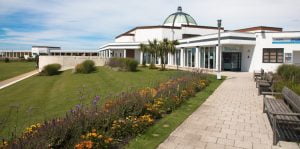
Image Ian Kennedy/Shutterstock.com
If you want to take in a show or fancy some live music then Narine Hall is the place for you. This classic 1930s Art Deco style complex not only encompasses the theatre but also has other recreational attractions and some great gardens.
Other Notable Fleetwood Sights
There’s always more to a destination than we can fit in with detail. If you are in town a little longer, then see the following sights if you can:
- Take a stroll in Memorial Park and consider those who came before. It’s a lovely area.
- The Marine Hall is a recent addition to the town, but it is striking nonetheless, and maybe you could hire a boat.
- The Pharos Lighthouse is a round lighthouse in town.
- Euston Gardens and Park are lovely for walks.
- Spend some time at the Fisherman’s Memorial, dedicated to lost trawlermen, where statues wait to welcome them home.
There are plenty of things to see and do in Fleetwood for all to enjoy. That’s what makes it such an exciting place for tourists to visit on beach days.
How to get to Fleetwood?
Use these very loose directions to try not to get lost on your way to Fleetwood. To be fair, it’s on a peninsula. If you can’t find it, there’s little we can do to help.
By Road
Head north from Blackpool/Thornton.
By Rail
Now, go to Thornton and catch a bus. Plans have been laid out for a station but it’s not there yet. Fleetwood has seen three stations come and go in its time.
By Air
Liverpool’s John Lennon Airport is closest to you.
By Sea
Fleetwood Port is a place but you need a cargo ship or a ferry to get in.
Five Minutes Spare – Because We Make Travel Fun
If you liked our little guide, then head to our homepages and indulge yourself. There are plenty of places in England to explore… and we have reviewed most of them. At the very least, give us a follow on Facebook to show your appreciation.
[i] http://www.wyrearchaeology.org.uk/index.php/digs/bourne-hill
[ii] https://www.visitfleetwood.info/about/history/history-of-fleetwood/
[iii] https://en.wikipedia.org/wiki/Category:People_from_Fleetwood
